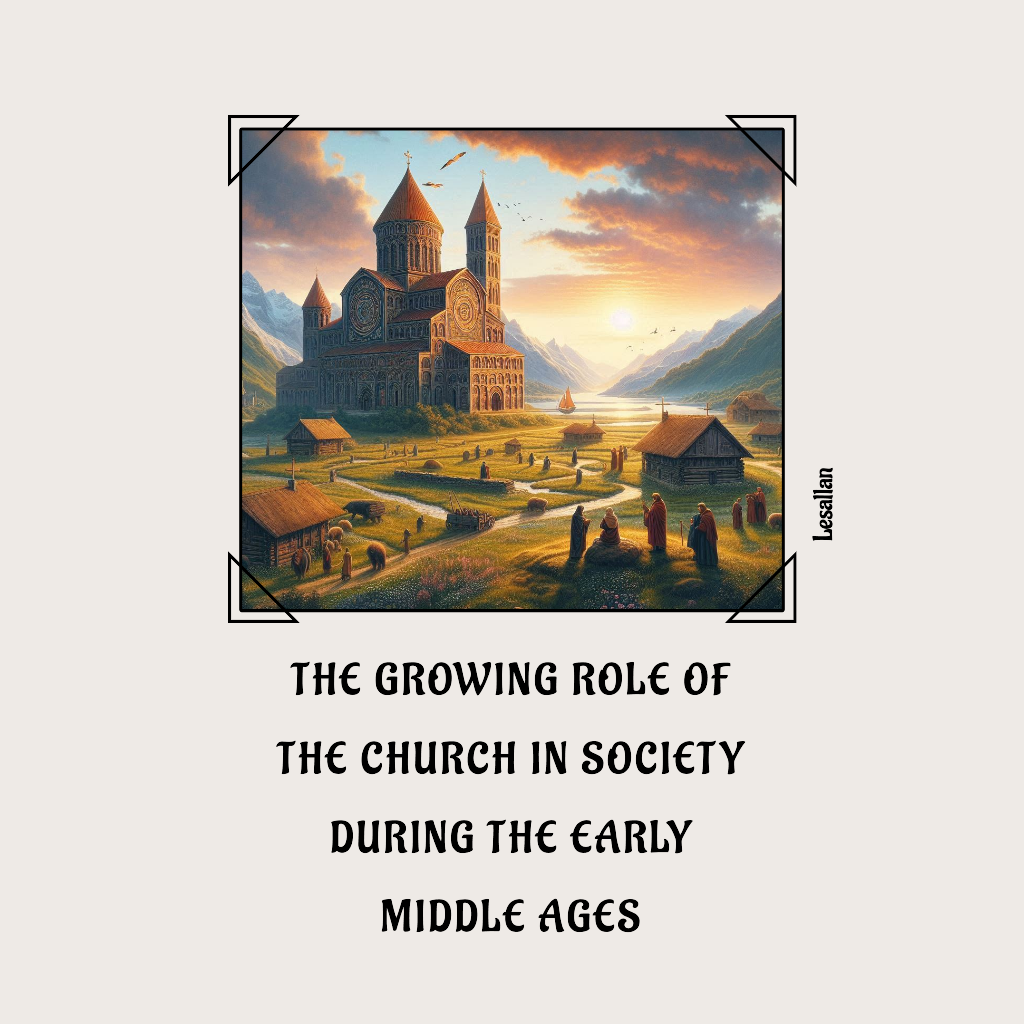June 18, 2024

The Growing Role of the Church in Society During the Early Middle Ages
During the Early Middle Ages, a time of political turmoil and social unrest, the church rose as a symbol of stability and direction. As governments in Western Europe struggled and external dangers loomed, individuals looked to the church for guidance and assistance. This essay investigates how the church offered stability and leadership during this chaotic era, referencing Bruce Shelley’ “Church History in Plain Language” (Shelley, 2021).
The church was a source of spiritual and moral guidance, stability, and leadership. It provided people with spiritual comfort and moral guidance, assisting them in navigating the challenges of the era. According to Shelley (2021), “the church emerged as the central institution for individuals seeking to comprehend their role in the world and their connection with the divine” (Shelley, 2021, p.214).
Monasteries and cathedral schools played an essential role in sustaining knowledge and promoting education. Shelley notes that “monasteries became centers of learning, where classical texts were copied and preserved” (Shelley, 2021, p. 217), ensuring the continuity of intellectual traditions.
The church provided essential social services, including care for the poor, sick, and orphaned. Shelley highlights that “the church’s charitable activities were a vital source of support for the most vulnerable members of society” (Shelley, 2021, p. 220).
Bishops and other church leaders often acted as mediators in political disputes and advisors to rulers. Shelley points out that “the church’s involvement in political affairs helped to stabilize governance and reduce conflicts” (Shelley, 2021, p. 223).
Shelley’s exploration of the church’s influence on cultural and intellectual life is particularly intriguing. He highlights that the church played a dual role as both a religious institution and a significant cultural and intellectual force, exerting influence on art, literature, and philosophy (Shelley, 2021, p. 225). This multifaceted impact underscores the church’s pivotal role in shaping the societal landscape during the Early Middle Ages.
During the Early Middle Ages, the church played a crucial role in society, offering spiritual guidance, preserving education, providing social services, and influencing politics. According to Shelley (2021), the church’s capacity to offer stability and leadership during tumultuous times significantly impacted the trajectory of Western European history.
Blessings,
Lesallan
References:
Shelley, B. (2021). Church History in Plain Language (5th ed.). Zondervan Academic.
Ohio Christian University
THE2300 Historical Theology I (ONLSP242)



2 Comments
telugu lyrics bilvashtakam · June 20, 2024 at 6:25 pm
Its like you read my mind You appear to know so much about this like you wrote the book in it or something I think that you can do with a few pics to drive the message home a little bit but other than that this is fantastic blog A great read Ill certainly be back
Temp Mail · June 21, 2024 at 7:53 pm
The level of my appreciation for your work mirrors your own enthusiasm. Your sketch is visually appealing, and your authored material is impressive. Yet, you appear to be anxious about the possibility of moving in a direction that may cause unease. I agree that you’ll be able to address this matter efficiently.
Comments are closed.